
Guide
Spotify: five ways to improve your audio streaming experience
by Florian Bodoky

With millions of songs, dozens of podcasts and countless audio books, audio streaming services are as much a part of everyday life as phone contracts. The question is, which one should you use? I took a look at the six most popular services and compared them to find out.
Audio streaming is the most common way to listen to music these days. Each streaming service has its advantages and drawbacks. They differ not only in their song selection, but also in aspects such as audio quality, available additional content and fairness towards artists.
Choosing the right audio service is totally different to series and film streaming, for example. When it comes to audio, you usually only have one service, not several. And there’s very, very little exclusive content, which is usually the dealbreaker when choosing between Netflix, Disney+ and the like. So, which service should you opt for? I’ve carried out a comprehensive comparison of the main services so you don’t have to.
As part of this review, I’ll be comparing six major providers: Spotify, Apple Music, YouTube Music, Tidal, Deezer and Qobuz. My rating is based on five central criteria: music selection, additional content choice (podcasts, audiobooks, children’s content), audio quality, app functionalities and artist remuneration. I’ve left the prices out of this review, as the Swiss prices for a single subscription per month differ by a maximum of 1.05 francs. The standard price for Tidal, Qobuz, Apple Music and YouTube Music is 13.90 francs. Meanwhile, Spotify charges 13.95 and Deezer, 14.95 francs .
Disclaimer: it’s impossible to avoid a certain amount of subjectivity and individuality with non-quantifiable criteria, such as the interface or importance of quality. So, do take this into account. Ultimately, this guide isn’t the be-all and end-all. Its aim is to give you criteria to consider when making your choice.
I want to be able to find all sorts of songs on a streaming service – from chart hits to niche genres. That’s why I pay attention to the size of the catalogue, international titles and exclusive albums. A wide variety is what keeps a service exciting and versatile for me. In this regard, I check how the service positions itself (Qobuz, for example, sets itself very clearly in terms of genre). The artists they may have as ambassadors can also give you an indication (e.g. Alicia Keys and Jay-Z on Tidal) as does sampling different genres. But obviously, I can’t analyse the entire music catalogue.
I don’t just listen to music. What also makes a service valuable for me are good podcasts, audiobooks, audio plays and content for children. I like being able to find everything in one place without needing to take any detours.
When I listen to music with high-quality headphones or speakers, I want the best sound. MP3 doesn’t cut it. I check to see if the service offers lossless formats such as FLAC or hi-res. This is the only way I can really enjoy music to its full depth. But for podcasts and audiobooks, it’s not so important.
A good app makes all the difference. I want to be able to find music quickly, create playlists easily, get recommendations and, if possible, upload my own music. It’s also important to bear in mind that I often stream on speakers or in the car, so it has to run smoothly.
I want the artists I listen to be paid fairly. That’s why I find out how much goes to them per stream – and whether the service uses a transparent model. Making music should be worthwhile for artists, not just the platform.
I’ll be comparing the services in the same order as I published my streaming tips ).
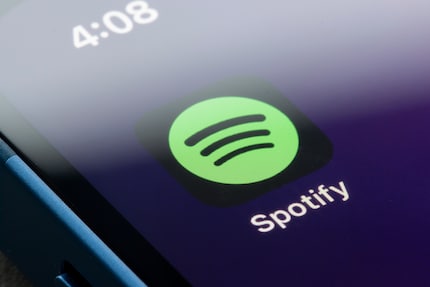
Spotify is the top dog in the streaming market with its huge music catalogue, excellent personalisation and strong podcast presence. The app is well thought-out, fast and has its own social media profiles. However, Spotify has weaknesses when it comes to music quality and artist remuneration.
With more than 100 million songs, Spotify gives you access to a huge range of music genres. You’ll find current pop music as well as classic rock titles, experimental indie and international niche numbers. Of course, there’s also a lot of music that only very few people are likely to be interested in or that hardly anyone gets to hear. For example – but not just this – AI-generated songs that haven’t had any human input. Spotify provides you with automatically created daily playlists based on your previous listening behaviour. You’ll also find a variety of curated lists from music editors. Although exclusive releases are rare, you can usually listen to new releases straightaway.
Spotify’s podcast catalogue is one of the most extensive on the market. You get access to popular formats in a wide range of categories, including a lot of exclusive productions. Content for children such as songs, stories and knowledge formats are accessible via a separate section. You’ll also find audio plays. Spotify is currently expanding its audiobook section, but the implementation still seems inconsistent. It’s somewhat unclear what’s included in which subscriptions.
The Spotify app is clear and easy to use. You’ll find functions such as your Discover Weekly playlist, the lyrics display or Spotify Connect, which you can use to play music on different devices. An AI-supported DJ mode is also available. All in all, you get a stable, well thought-out user experience.
Spotify doesn’t currently offer lossless audio quality. You can listen at up to 320 kbit/s in Ogg Vorbis format. For many people this may be enough for day-to-day listening, but it’s annoying that Spotify doesn’t offer a lossless format. Especially since the introduction of a hi-fi option has been announced several times but hasn’t yet been implemented.
Spotify is regularly criticised when it comes to how it pays artists. The current pro-rata model puts smaller acts at a disadvantage and promotes mass success. For many musicians, this means extremely low revenues per stream. At the same time, the platform offers immense reach and visibility, which shouldn’t be underestimated, especially for new artists. Of course, this also requires luck, e.g. that your band ends up on a large playlist or is simply played somewhere by the algorithm. Nevertheless, the remuneration structure remains one of the biggest areas of contention in the streaming market, especially as Spotify hasn’t yet taken any steps towards user-based distribution, despite the fact this would be fairer.
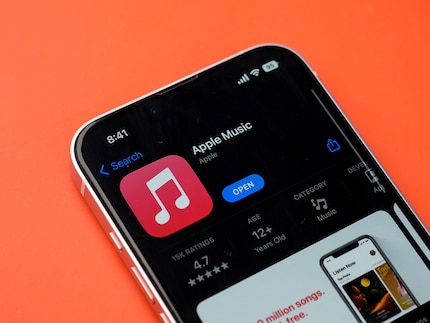
Apple Music combines high-quality sound with exclusive releases and strong device integration in the Apple universe. It’s aimed at discerning iOS users. The app has a lot to offer, but it’s overloaded in places and is less attractive for Android users.
Apple Music also offers over 100 million tracks. In addition to well-known international releases, you’ll discover exclusive content, especially from major artists. The editorially maintained playlists focus less on algorithms and more on targeted recommendations from various genres, including classical, jazz and alternative music. You can connect your old iTunes library to the streaming service and integrate your own music.
Apple Music offers lots of audiobooks and a clearly structured children’s section with lots of familiar content, which is great for families. Podcasts, on the other hand, aren’t directly integrated into Apple Music and are instead accessible via the separate Apple Podcasts app. This separation can seem cumbersome, but it also provides a clear demarcation. Even if this makes podcast use less convenient, Apple Music still boasts impressive depth and quality in the remaining areas of its diverse content.
The Apple Music app is heavily integrated into the Apple ecosystem. It looks elegant and functional, with good connectivity to HomePods, Apple Watch and CarPlay amongst others. The search is intelligent, and playlists and recommendations are curated to a high standard. On iOS, the app is well embedded in the system. This allows you to ask Siri to play a song on Apple Music. Or if you approach your HomePod with your iPhone, the following message will appear: «Music is now playing on the HomePod». Functions such as crossfade, lyrics or automatic radio system round off the experience. Overall, the app is powerful but more optimised for Apple users.
Apple Music offers lossless audio in ALAC up to hi-res with 24 bit and 192 kHz. Spatial audio with Dolby Atmos is also supported, which significantly enhances the listening experience on compatible devices. You can enjoy the entire library in lossless, provided the appropriate hardware is used. This positions Apple Music as one of the best services for sound quality. However, the technical requirements for hi-res can be a barrier to entry for non-professionals. Nevertheless, anyone who values audio quality will get their money’s worth with Apple Music.
Apple Music pays artists significantly better compared to other services. The model is more strongly oriented towards actual user behaviour and favours loyal fans over just mass success. This makes Apple Music particularly attractive for indie artists or labels that rely on long-term fan loyalty. The platform communicates its remuneration policy relatively transparently and strives for fairness, even though the system isn’t yet user-centred. That being said, it shows clear progress in the direction of fairness for artists.
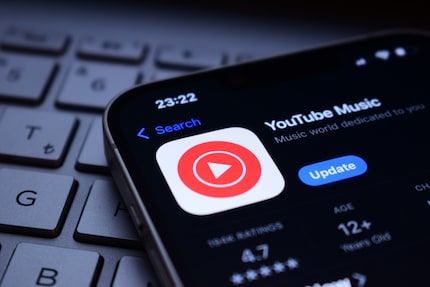
YouTube Music utilises the breadth of content available through the platform, including official songs, live versions, remixes, fan covers and rare recordings. This gives the service a unique advantage as you can find content here that you won’t on other platforms. However, the quality is inconsistent and the search for specific versions can be tedious. Its music database is huge but not fully curated. While this provides freedom for frequent listeners, it also requires effort.
The music library isn’t clearly delineated and instead is fed by everything that’s been uploaded to YouTube. This allows you to find rare recordings and special versions. As a result, you may need to spend more time to find exactly what you’re looking for. The platform doesn’t always distinguish between official and unofficial material.
Although you can access content such as audiobooks or audio plays via YouTube itself, they’re not integrated into YouTube Music in a structured way. This means that although they exist, they’re not sorted into a separate genre and are simply categorised under Albums, for instance. As a result, you have to search for it specifically and then find out whether the album is a audio play. If you’re looking for specific topics, it can be frustrating. The mix of music and video content makes things more confusing.
The app allows you to switch between video and audio view. Recommendations work well, especially through Google’s search technology. You can save playbacks, create playlists and listen to content offline. However, there’s no differentiated music management.
In terms of sound quality, YouTube Music doesn’t offer any lossless formats. The maximum streaming quality is around 256 kbit/s in AAC format. Again, this is probably enough for some people for everyday and mobile use, but if you’re really into your audio, you’ll miss having FLAC or hi-res audio formats at your fingertips (or even a higher sampled quality such as 320 kbit/s). Similarly, there’s no option to manually adjust the audio quality, which proves a disadvantage for discerning listeners and poor internet connections.
Payment to artists on YouTube Music is very low compared to other services. A lot of content is ad-financed, which has a negative impact on per-stream remuneration. The platform prioritises reach and algorithmic success through targeted support. Artists with viral hits benefit, while smaller acts only generate low revenues despite high views.
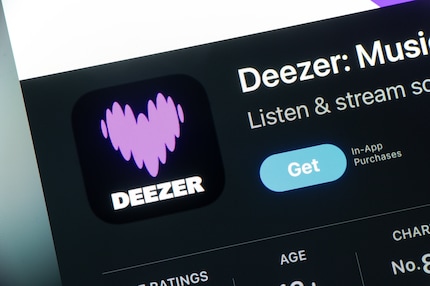
Deezer boasts an impressive and strong overall package with its good music selection, flow recommendations, upload function and FLAC quality. The service, which originated in France, is particularly popular in Europe. The portal Tone Island learnt this from Deezer itself, as at least a third of its approximately 10 million users are in France. The design and innovations appear somewhat conservative, but what it offers is well-rounded and fair.
Deezer delivers around 90 million songs and is aimed at a broad audience. The platform is particularly strong in Europe, and indie artists are also well represented. Although Deezer doesn’t have exclusive contracts like Apple, it does feature broad coverage of different genres. Much of the content is also regionally adapted, such as French pop or Arabic music. Users also benefit from a well thought-out recommendation system that matches their musical tastes and regularly suggests new discoveries.
Deezer offers a solid selection of podcasts, audio plays, children’s content and audiobooks. The material is well structured, clearly categorised and well sorted. Although there’s a lack of major exclusive content, the range is more than sufficient for daily requirements. Deezer is particularly appealing for families thanks to its kids’ section and easy navigation.
The app is functional and, with the Flow feature, offers a mix of familiar and new songs to suit your taste. You can upload your own music files, which gives you additional flexibility. The app runs stably on many devices, from smartphones to smart speakers. Its user interface, meanwhile, is pleasantly minimalist.
Via its hi-fi subscription, Deezer offers music in FLAC with 16 bit and 44.1 kHz, i.e. lossless CD quality. This is a clear advantage over MP3 streaming and ensures clean sound on good speakers or headphones. Deezer doesn’t currently provide true hi-res playback beyond CD quality. Nevertheless, it offers a good balance of quality, range and usability.
Deezer is actively working on a user-centred payment model where artists are only paid when a user actually listens to them. This should be particularly beneficial to independent artists. The model is being tested right now in several countries. Compared to Spotify and YouTube, Deezer is in a much fairer position thanks to this approach, even though it’s not yet implemented this practice globally.
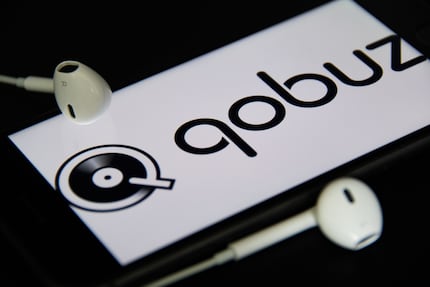
Qobuz is the home for audiophiles and lovers of classical music and jazz. With hi-res streaming, booklets and detailed metadata, the service delivers a high-quality listening experience. While it provides very little in the way of mainstream tracks and no podcasts, it hones in on pure music at a high quality level.
Qobuz focuses on classical music, jazz, world music and sophisticated pop and rock productions. You’ll find fewer mass-market tracks, but the app makes up for it with high sound quality titles and extensive metadata. A lot of albums come with digital booklets, additional information or artist features. If you want to experience music more intensively, Qobuz offers an alternative to the mainstream.
Qobuz doesn’t offer podcasts, audiobooks or dedicated children’s content. Instead, the platform focuses entirely on music and provides editorially prepared material such as artist portraits, music histories, reviews and album critiques. The editorial content is knowledgeable and aimed at a music-savvy audience that’s interested in more than just listening. However, Qobuz isn’t the service for you if you’re looking for additional format.
The app is simple but focused on functionality. You get access to album booklets, you can save your music offline and choose between different audio qualities. There’s no social component, nor is it possible to manage your own uploads. But what it lacks in that regard it makes up for with in-depth information on songs, composers and producers, which is particularly helpful for classical music lovers.
Qobuz is one of the few platforms to offer genuine hi-res audio without proprietary formats. You can stream music at up to 24 bit/192 kHz, while FLAC is standard. Many albums are available in various quality levels. If you use high resolution headphones or speakers, you’ll clearly hear the difference.
Qobuz pays comparatively fair licence fees, especially to independent labels. This service isn’t owned by a tech group and pursues a more sustainable business model. There’s no user-based payment procedure, but transparency and long-term cooperation with rights holders at the forefront.
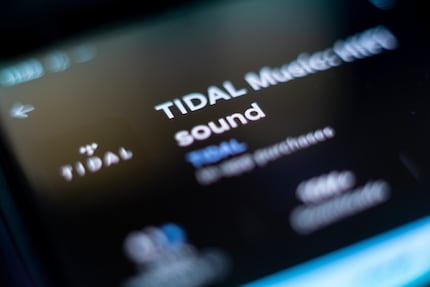
Tidal is clearly aimed at audio enthusiasts. With FLAC and a focus on artist remuneration, the service sets itself apart from others. Meanwhile, its app is comprehensive but sophisticated. This makes it perfect for listeners with high sound standards and an interest in urban music.
Tidal offers around 90 million songs with particular emphasis on urban, hip-hop, R&B, soul and jazz. A lot of artists, especially those from the US, regularly publish exclusive content here. Live recordings, remixes and master versions are also available for discerning listeners. The depth of its catalogue is also impressive, with classic and independent artists, although Tidal doesn’t have the same breadth in international pop as Spotify or Apple Music.
Tidal offers editorial content such as interviews, essays and recommendations on cultural topics. However, podcasts and children’s content are largely absent. If you see music as a cultural product and like to delve deeper, this is a great place for discovering material that goes beyond just listening.
The app seems comprehensive, providing lyrics, producer information and credits for each track. You can use equalisers, save offline playlists or stream via multi-room systems. The interface is somewhat denser but is clearly aimed at users who want to engage intensively with music.
Tidal offers two sound levels: standard quality (AAC) and high-fidelity (FLAC, hi-res FLAC). The latter reach up to 24 bit/192 kHz and are aimed at audiophiles with the appropriate equipment. For a lot of users, the FLAC level alone should already be a clear advantage over AAC. This makes Tidal one of the most audiophile-friendly providers on the market.
Tidal was an early advocate of fairer payment for artists. With the so-called fan-based model, a larger share of its subscription revenue goes directly to the artists that a user actually listens to. Via the HiFi Plus model, artists also receive additional amounts if they’re amongst a subscriber’s most listened-to musicians. This clearly positions Tidal as artist-friendly and going beyond the standard market pro rata model.
The following chart shows how I’ve assessed all the different services. I’ve rated music variety with a factor of 1.4, as this is my top priority. I’m also interested in other content such as podcasts and audiobooks, so I calculate those points with a factor of 1.3. Music quality is also important, but an Ogg Vorbis codec, sampled at 320 Kbit/s, is sufficient for mobile use for most people. This is why a factor of 1.2 has been applied here. I don’t want to get my headphone cables in a twist over the app as it’s not that important so it gets a factor of 0.8. Finally, remuneration is given a factor of 0.6, even if artists get a good wage, music that I don’t like isn’t of any use to me. If you don’t care about a category, you can select it in the key.
I’ve created a ranking for each category. The most appealing service in each receives ten points. Eight points go to the runner-up, six to the third, four to fourth, two to fifth and one point to the last-placed. I then multiply the points by the weighting factor and add up the results of all categories. The scores are in:
If a category is less important to you, you can select it in the key. It’s then deactivated and the ranking is automatically recalculated without this criterion.
The ranking shows clear differences in the focus and overall quality of the streaming services. In my opinion, *Apple Music** takes the top spot thanks to its high sound quality, fair remuneration and large selection of music, It’s a better-paying Spotify for users in the Apple ecosystem, so to speak. That being said, if you like particularly niche music or are a podcast junkie, it’s probably not quite the right thing for you.
Spotify comes right behind with a solid app experience, large selection and unbeatable podcast presence. However, it loses points due to weak sound quality and artist remuneration. You can’t go far wrong with Spotify, unless you really want a hi-res subscription.
Deezer offers a solid overall package with fair remuneration and good functions. It has a particularly cool feature that lets you choose a country and then get specific priority recommendations from local (or at least national) artists. This is also helpful for the indie scene in smaller countries – and for their fans.
Tidal wins over audio enthusiasts with hi-res quality and an artist-friendly remuneration model but loses out due to its limited variety of content. This is for you if you’re looking explicitly and (almost) exclusively for music and are interested in background information on artists. It’s certainly not an all-rounder.
Qobuz has positioned itself as a niche service for sound purists and classical music lovers alike. No other service offers as much editorial content as Qobuz. From portraits to music analyses, interviews with artists and information about booklets and their artwork – this is the place for classical and jazz nerds.
YouTube Music benefits from variety and video access but suffers due to low audio quality and weak curation. That being said, the community is larger than with any other service – and for four francs more, you also get the streaming service in a bundle with YouTube Premium, meaning you can consume all YouTube content without advertising.
Overall, it’s clear that no service is perfect, but there are clear recommendations depending on the type of user you are.
I've been tinkering with digital networks ever since I found out how to activate both telephone channels on the ISDN card for greater bandwidth. As for the analogue variety, I've been doing that since I learned to talk. Though Winterthur is my adoptive home city, my heart still bleeds red and blue.
Practical solutions for everyday problems with technology, household hacks and much more.
Show all